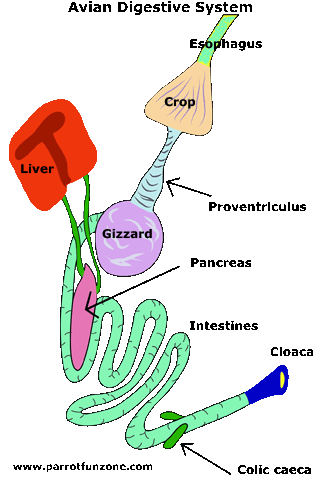Parrots are a fascinating group of birds that are known for their intelligence, social behavior, and unique physical features. In this article, we will explore the anatomy of parrots in detail, including their distinctive beaks, feet, and internal structures.
Beak

One of the most striking features of parrots is their curved, hook-shaped beak. The beak is made of keratin, the same material as human nails and hair, and is a vital tool for parrots in the wild. Parrots use their beaks to crack open seeds and nuts, as well as to break off pieces of fruit and other plant material.
The beak of a parrot is also used for grooming, preening, and manipulating objects. Parrots have a special gland above their nostrils called the "uropygial gland" that produces an oily substance that they use to keep their feathers clean and healthy. Parrots will rub their beaks against this gland and then distribute the oil throughout their feathers.
Another unique feature of the parrot beak is that it continues to grow throughout the bird's life. This is because the beak is made up of two layers, an outer layer that is hard and durable and an inner layer that is softer and contains blood vessels and nerves. As the outer layer wears down from use, the inner layer continues to grow and replace it.
Feet

Parrots have zygodactyl feet, which means they have two toes facing forward and two toes facing backward. This arrangement of toes gives parrots a strong grip, which is useful for perching, climbing, and manipulating objects. Parrots also use their feet to hold food while they eat and to help them balance when they are flying.
In addition to their toes, parrots also have a special structure called a "hallux" on their feet. The hallux is a backward-facing toe that is positioned at the back of the foot. This toe is especially important for parrots because it allows them to grasp onto branches and other surfaces with greater dexterity and stability.
Internal Structures

Parrots have a number of unique internal structures that are adapted to their unique lifestyle. For example, parrots have a crop, which is a pouch-like structure located at the base of their esophagus. The crop is used to store food temporarily before it is digested, which allows parrots to eat quickly and then move to a safe location to digest their food.
Parrots also have a gizzard, which is a muscular part of the stomach that helps to grind up food. Because parrots eat a diet that is high in seeds and nuts, which are difficult to digest, the gizzard is an important part of their digestive system.
Another unique feature of parrots is their highly developed brain. Parrots are known for their intelligence, and they have been shown to have cognitive abilities that are comparable to those of primates. Parrots have a large brain relative to their body size, and their brains have a high density of neurons. This allows them to learn complex behaviors and even to mimic human speech and other sounds.
.png)